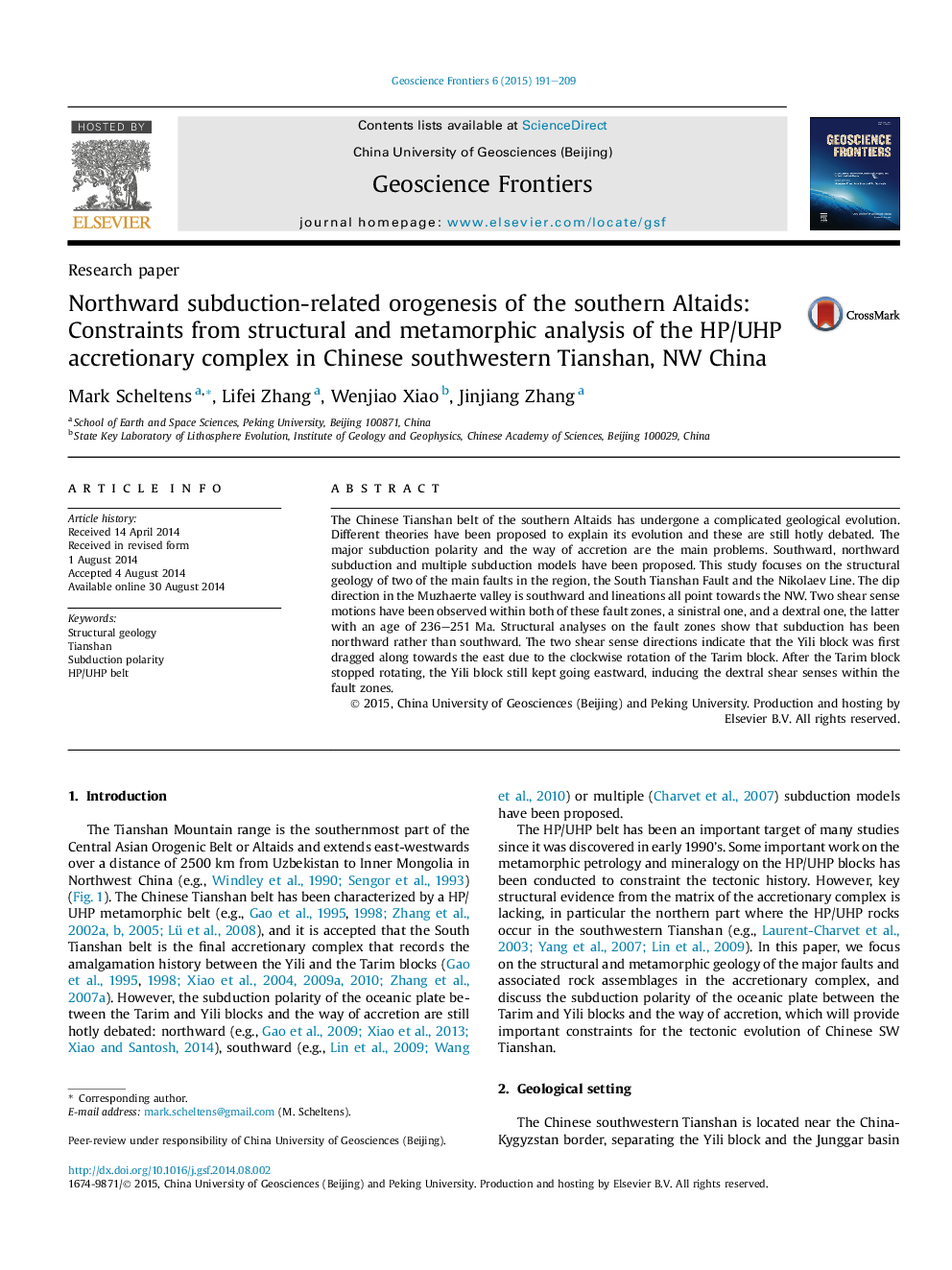| Article ID | Journal | Published Year | Pages | File Type |
|---|---|---|---|---|
| 4681631 | Geoscience Frontiers | 2015 | 19 Pages |
•Major finding on structural analysis.•We found phengite in the matrix of the South Tianshan Fault and HP/UHP-baring melange.•N-ward subduction with complicated history.•Dextral motion along the South Tianshan Fault has an age of 236–251 Ma.
The Chinese Tianshan belt of the southern Altaids has undergone a complicated geological evolution. Different theories have been proposed to explain its evolution and these are still hotly debated. The major subduction polarity and the way of accretion are the main problems. Southward, northward subduction and multiple subduction models have been proposed. This study focuses on the structural geology of two of the main faults in the region, the South Tianshan Fault and the Nikolaev Line. The dip direction in the Muzhaerte valley is southward and lineations all point towards the NW. Two shear sense motions have been observed within both of these fault zones, a sinistral one, and a dextral one, the latter with an age of 236–251 Ma. Structural analyses on the fault zones show that subduction has been northward rather than southward. The two shear sense directions indicate that the Yili block was first dragged along towards the east due to the clockwise rotation of the Tarim block. After the Tarim block stopped rotating, the Yili block still kept going eastward, inducing the dextral shear senses within the fault zones.
Graphical abstractFigure optionsDownload full-size imageDownload as PowerPoint slide
